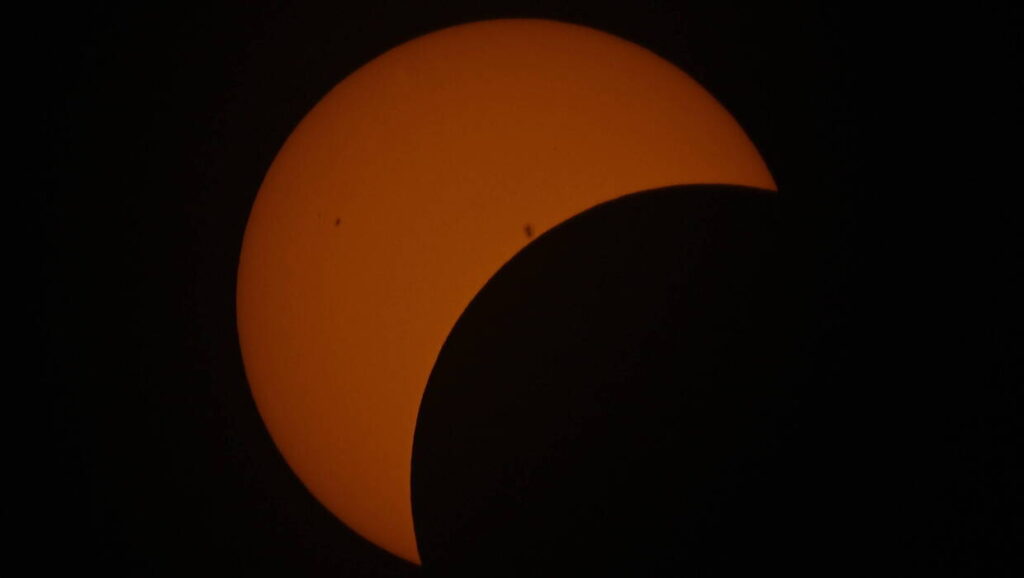Seven companies and research institutions from Poland are participating in the experimental research project Proba-3 (Project for Onboard Autonomy), led by the European Space Agency (ESA). On 5 December this year, two satellites were launched into space from the Satish Dhawan Space Centre in India. The study will focus on exploring the mysteries of the Sun’s corona, with the precision flying of the two satellites potentially enabling up to 50 artificial solar eclipses per year.
The mission began on December 5 2024 and it aims to study the solar corona. “Proba-3 is devoted to the demonstration of technologies and techniques for highly-precise satellite formation flying” read on web site of ESA.
Blocking the sun disc
Proba-3 aims to study the outermost parts of the Sun’s atmosphere, the solar corona, which is notoriously difficult to observe. “Anyone who has tried taking a photograph knows how challenging it can be to capture a scene that includes both extremely bright and very dark objects, such as taking a selfie with the Sun behind you. The Sun’s disc, which is millions of times brighter than the corona, would overwhelm the coronagraph’s detector. To address this, we use an occulter to block it,” explained Dr Tomasz Barciński, from the Space Research Centre of the Polish Academy of Sciences (CBK PAN), in an interview with PAP.
Natural solar eclipses, essential for studying the corona, occur only a few times a year and last no more than 7–8 minutes. To overcome this limitation, the Proba-3 mission will simulate up to 50 artificial solar eclipses annually, each lasting approximately six hours during a complete orbit.
The two satellites launched to space will work together to achieve a single, ambitious objective: emulating the conditions of a total solar eclipse. One spacecraft will cast a shadow onto the other, mimicking the way the Moon casts a shadow on the Earth during a solar eclipse.
The satellites will remain separated by a fixed distance of 150 metres, with ultra-high precision of just a few millimetres, aligned along a line passing through the centre of the Sun’s disc. Their orbit will bring them as close as 600 km to the Earth’s surface and as far as 60,000 km at their furthest point.

Source: . PAP/Abaca/ Peter Zay / Anadolu/ABACAPRESS.COM
The solar corona and communications
“Proba-3 is exactly the kind of mission where ESA excels, applying advanced technology to achieve new scientific insights while pioneering a wholly novel way of operating in space,” explained Josef Aschbacher, Director General of ESA.
A key outcome of the Proba-3 experiment could be mastering the ability to maintain multiple satellites in a fixed position relative to each other with ultra-high precision. “This technology will be highly valuable in the future for various orbital manoeuvres, such as satellite refuelling or repairs in space,” explained PAP Dr Piotr Orleański, Director of the Space Research Centre PAS.
Another primary goal of the mission is to collect data on the solar corona. Scientists aim to better understand phenomena such as solar storms, which disrupt satellites and communication systems, and to explore why the corona is significantly hotter than the Sun’s surface.
Proba-3 further demonstrates transformative technologies for in-orbit satellite servicing, including refuelling, repairs, and upgrades. The precision formation flying techniques developed in this mission could extend satellite lifespans and significantly reduce space debris by enabling the maintenance and reuse of existing space assets.
Proba-3 – a modest project with far-reaching goals
The mission is the fourth instalment in a programme that began in 2001. “Proba-3 is a relatively small experimental mission, involving newer ESA Member States, including Romania, the Czech Republic, and Poland,” claims Damian Galano, ESA’s Proba-3 Project Manager.
The Proba-3 mission engaged 40 companies and institutions from 14 countries, with seven of them based in Poland. Polish experts made a notable contribution to the project, collaborating on the construction of the coronagraph and developing scientific software.
Among the Polish contributors was N7 Mobile, a company that started as a software developer specialising in mobile applications for entertainment, music streaming, and payment systems, but has since expanded to include a small space division. Other Polish participants included the Space Research Centre of the Polish Academy of Sciences (CBK PAN), Creotech, Sener, GMV, Solaris Optics, and PCO.
More:


